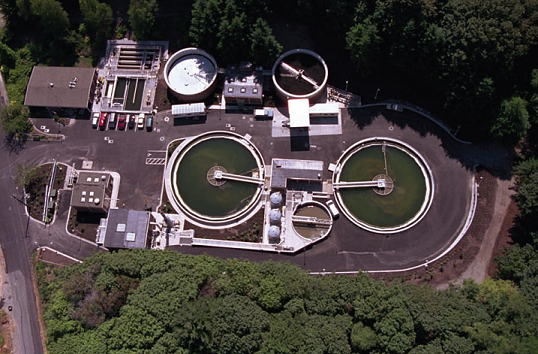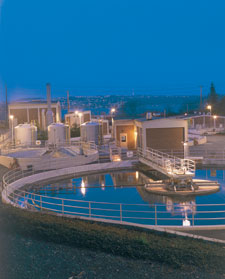 Nestled
in picturesque Mason Gulch, the North End Wastewater Treatment Plant is one
of the most innovative operations in the
country. Its cutting-edge and cost-saving approach won a national award established
by Rutgers University to honor public projects that achieve greater productivity,
efficiency and cost savings by applying creative, unconventional approaches to solving
problems.
Nestled
in picturesque Mason Gulch, the North End Wastewater Treatment Plant is one
of the most innovative operations in the
country. Its cutting-edge and cost-saving approach won a national award established
by Rutgers University to honor public projects that achieve greater productivity,
efficiency and cost savings by applying creative, unconventional approaches to solving
problems.
The alternative treatment process used at the plant is so efficient it doesn't require
additional large tanks and acreage like most conventional treatment plants. These
features translated to big savings in construction costs, which were necessary because
of the plant's confined location.
The plant was upgraded in stages between 1989 and 1997 at a cost of $10 million,
considerably less than the typical $38 million for a conventional treatment system.
The North End Treatment Plant has played a role in
Tacoma's development.
 Treating Wastewater at the North End Wastewater Treatment Plant
Treating Wastewater at the North End Wastewater Treatment Plant
- Wastewater, which is 99.9 percent water, is pumped as it enters the North
End Wastewater Treatment Plant from below ground to begin the treatment process.
- The wastewater flows through a screen, called a bar rack.
- Then it goes to flow-measurement devices, where an aluminum salt (alum)
solution is added.
- It travels to a grit removal tank, where large, heavy particles, including
sand, are settled out and removed.
- The wastewater passes into one of two sedimentation tanks, where a chemical
polymer is added to help settle solids to the bottom of the tank, and then a
sweeping mechanical arm skims off any light floating material.
- The clean water is sent to the biological polishing filter, a latticework
system providing places for good bacteria to grow, which removes most of the
small amount of solids left in the water. The bacteria eat the organics
in the water as it flows in a thin layer over the top.
- The water is chlorinated and flows by gravity to an outfall line, discharging
it 700 feet out into Commencement Bay at a depth of 90 feet.
- The settled solids from the sedimentation tanks are trucked to the
Central Wastewater Treatment Plant, where they are processed further and
turned into
TAGRO Mix or Potting Soil, our award-winning soil products.
For more information about the North End Treatment Plant, call (253) 591-5588.